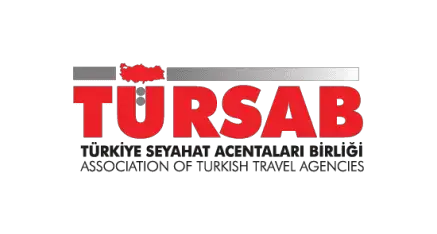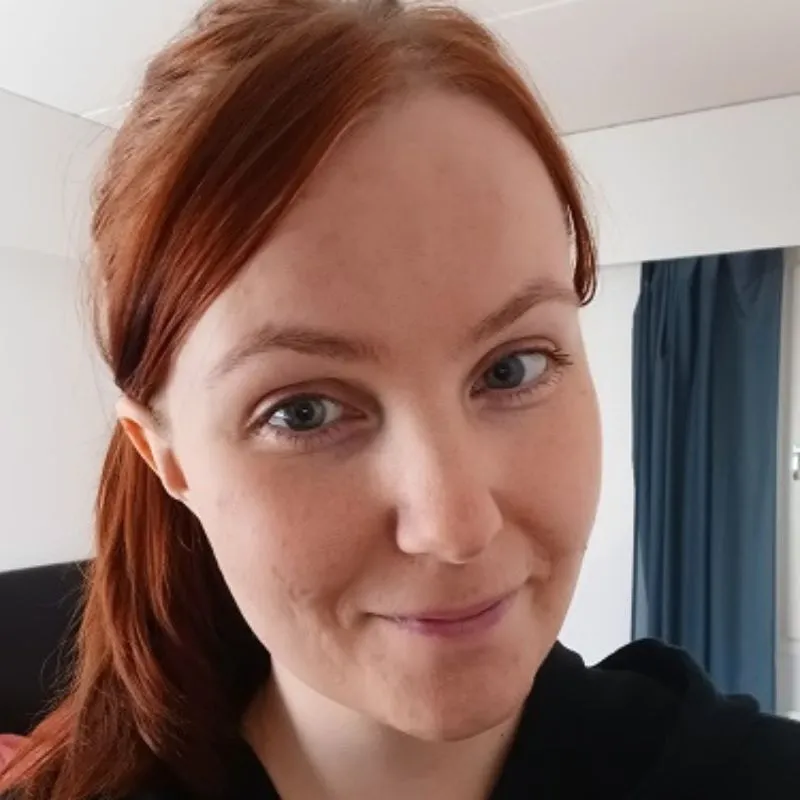Last edited, 4 April 2024
I think that beard transplants have witnessed a remarkable rise in popularity in recent years. This surge can be linked to evolving beauty standards, where a full beard is now perceived as a mark of masculinity and maturity. Furthermore, the progression in medical technology has made the procedure safer and more efficient, thereby boosting its popularity.
A beard transplant is a medical procedure that entails the relocation of hair follicles from one part of the body, often from the rear of the scalp, to the face. The primary objective of this procedure is to augment or reestablish the growth of facial hair, specifically in the beard and mustache regions. It has emerged as a favored remedy for men grappling with sparse or uneven beard growth, as well as those who have experienced facial hair loss due to trauma or health conditions.
Men consider a beard transplant for a variety of reasons. For some, it’s a matter of aesthetics and personal preference. A dense, well-maintained beard can accentuate facial features and project a more mature and masculine image. For others, it’s a remedy for medical or genetic issues that inhibit the growth of a full beard, such as alopecia areata or hormonal imbalances. Additionally, beard transplants can serve as a means to conceal facial scars or skin conditions.
It is now possible to effectively execute a beard transplantation in Turkey thanks to expertise and advancements in transplantation procedures. The demand for beard transplant surgeries has risen recently in terms of improving many traits and enhancing appearance. Scarring or heredity may be to blame for patchiness and uneven beard hair growth. A beard transplant, also known as a facial hair transplant, can be the answer for you. Discover what to expect during, and following a beard transplant in Turkey below.

Before/After Catalog
What To Expect When Getting a Beard Transplant
A beard transplant usually works by creatively placing follicular units into the beard region in an effort to repair or improve uneven parts of facial hair. The angle, orientation, and position of each individual graft are typically the most crucial aspects of the surgery in order to produce a result that is both visually acceptable and entirely natural.
Your doctor will need to assess the quality of the hair in the recipient region and match it to a part of your body that might serve as a viable donor site before you perform a facial hair transplant. As a consequence, depending on what is most appropriate, hair may be removed from your head, chest, armpits, or other locations to assist achieve the results that seem the most natural.
Table of Contents
The Beard Transplant Process in General
Embarking on the journey of a beard transplant begins with an essential first step: the initial consultation. This meeting provides an opportunity for potential patients to engage with a hair restoration surgeon, discussing their aspirations, expectations, and apprehensions. The surgeon evaluates the patient’s facial hair growth, the density and quality of hair in potential donor areas, and the patient’s overall health. This consultation serves as a valuable opportunity for the patient to ask questions, comprehend the procedure, and establish a connection with the surgeon.
Once the patient decides to proceed with a beard transplant, preparations for the procedure commence. These typically involve blood tests to ascertain the patient’s health status and determine if the surgery can be safely performed. The patient may be advised to cease taking specific medications or supplements that could potentially interfere with the procedure or recovery. Additionally, the surgeon may suggest that the patient grow their facial hair, which can aid in guiding the transplant process.
The selection of the donor area is a crucial aspect of the beard transplant process. The surgeon must choose an area with adequate hair density and hair characteristics similar to the existing facial hair. Following the extraction of the donor hair, it is carefully implanted into the beard area. This process requires a discerning eye for detail and a comprehensive understanding of facial hair growth patterns to achieve a natural and aesthetically pleasing result.
Identifying the Ideal Candidate for Beard Transplants
Age Considerations
The optimal age for a beard transplant is not set in stone, but surgeons often advise waiting until at least the mid-20s. This recommendation is based on the fact that facial hair growth patterns usually mature during this period. Undergoing a transplant prematurely might lead to an unnatural-looking beard as additional hair growth occurs naturally. However, it’s crucial to remember that age isn’t an absolute barrier. Many men, even in their 30s, 40s, and beyond, have successfully undergone beard transplants.
Health Prerequisites
Maintaining good health is a vital prerequisite for any surgical procedure, including beard transplants. Aspirants should not have any conditions that could potentially interfere with the healing process or hair growth, such as skin disorders, uncontrolled diabetes, or blood clotting disorders. Additionally, candidates should refrain from smoking, as it can hinder wound healing and graft survival. A thorough medical evaluation is typically conducted to ascertain the candidate’s fitness for the procedure.
Setting Realistic Expectations and Goals
Ideal candidates for beard transplants are those who have realistic expectations and well-defined goals. They comprehend that while the procedure can significantly augment their facial hair, the results may differ based on individual hair growth patterns and the quality of the donor hair. They also acknowledge that achieving the desired outcome may necessitate multiple sessions and that the full results may take several months to become apparent.
Factors Influencing Beard Hair Growth
Various factors can influence beard hair growth and, in turn, the success of a beard transplant. These factors include hormonal imbalances, nutritional deficiencies, stress, and certain medications. An ideal candidate would have these factors under control. For instance, men with low testosterone levels may need to address this issue before undergoing a beard transplant, given the crucial role testosterone plays in facial hair growth.
Preparation Before Your Beard Transplant in Turkey
The secret to a successful beard transplant is careful planning. Here is a tutorial describing in detail how to be ready for a beard transplant if you intend to have surgical hair restoration soon in order to grow a thick and full beard.
- If you are currently using any medication for hair loss, stop. Typically, they consist of finasteride and minoxidil.
- Stop using anti-inflammatory drugs and blood thinners that contain aspirin or its derivatives.
- Stop using herbal supplements and multivitamins since they both have blood-thinning properties.
- Don’t forget to tell your surgeon if you use any blood pressure or diabetic medications.
- If you smoke, give it up at least two weeks before the procedure. Smoking can prevent transplanted hair from mending and growing quickly.
- Renounce booze and drugs. Alcohol use can produce effects that are comparable to smoking.
The Beard Transplant in Turkey Procedure
Most facial hair transplants, particularly beard transplants, employ the FUE procedure. Because there is no downtime or adverse consequences. Typically, this procedure takes 2 to 5 hours. No repeat sessions are often required.
During a beard transplant, the surgeon often separates the face into the front and lateral halves. For the surgeries, the surgeon may need 1,800 to 2,400 grafts.
- Extraction, preparation, and transplantation are all steps in the multi-step procedure for beard transplants. The donor area’s hair follicles are first removed and readied for transplant.
- To remove FUE grafts, a special “punch” instrument is used. This leaves several tiny circular scars that, after healing, are hardly noticeable, even with the shortest haircuts.
- For a more realistic appearance, large follicle groupings are divided. Before being put in a preservation solution for the implantation procedure.
- Tiny incisions are created in the beard region. The smallest scars conceivable are left by these incisions, which are no longer than a few millimetres. Even if you sometimes go clean-shaven following a beard transplant, there shouldn’t be any noticeable scars.
- Each graft is delicately placed into the patient’s beard by the surgeon, who is particular to angle each hair so that it will grow out looking completely natural.
Recovery After a Beard Transplant in Turkey
The transplanted region will appear quite natural after a week. The donor region recovers rapidly as well; within 15 days, you will resemble how you did before the procedure. The recovery guidelines are the same as for FUE hair transplants.
The majority of the results are visible to patients after six months, and after 12 to 18 months, it is possible to observe facial hair that is thick and seems natural.
To recuperate from the beard implant operation, you’ll require a day. Each freshly transplanted hair follicle may develop a little crust, but this should come off in a few days. You should be able to start shaving regularly and trimming your new beard after roughly a week to 10 days.
Contact your surgeon as soon as you become aware of anything that looks out of the ordinary. If not quickly resolved, a little issue might develop into a serious one. Your surgeon will provide you with information about potential issues before you leave for home to start the healing process.
Hi! I’m Sanna, your expert in achieving the best results from hair transplant procedures and maintaining long-lasting vitality in your hair.
Feel free to connect with one of IdealofMeD’s specialists today! Don’t hesitate to reach out if you have any questions or need guidance regarding hair transplant results. We’re here to support you on your journey to achieving the best possible outcomes for your hair transplant and maintaining its vibrancy!
- we are online
The Science Behind Beard Transplants
It could take up to three months for new follicles to take and begin the natural hair growth process. Full noticeable natural hair growth could take up to 10 months. Here are a few instructions to guide you during your healing process. As you heal and recover from your surgery, the days and weeks immediately following are critical.
Hair growth is an intricate process, governed by multiple biological mechanisms. The journey of hair growth originates in the hair follicle, a minuscule structure embedded in the skin responsible for hair production. This hair follicle undergoes a cyclical process comprising an anagen (growth) phase, a catagen (transitional) phase, and a telogen (resting) phase. During the anagen phase, new cells are generated within the hair follicle, pushing the older ones upwards, thereby facilitating hair growth. Factors such as hormones, nutrition, and overall health significantly influence this process.
Genetics significantly influence the thickness, color, and pattern of facial hair. The AR (Androgen Receptor) gene is of particular importance as it governs the body’s response to androgens, the hormones responsible for male characteristics, including facial hair. Variations in the AR gene can result in disparities in beard growth among men.
The Psychological Impact of Beard Transplants
The psychological implications of physical appearance, particularly facial features, are profound. In this context, the beard plays a pivotal role in shaping a man’s self-perception and confidence.
A beard is often emblematic of masculinity, maturity, and wisdom. For many men, the inability to cultivate a full, thick beard can be a source of insecurity.
Men who are unable to grow a beard may feel less masculine and may exhibit lower self-esteem compared to those who can. This is where beard transplants offer a viable solution to those grappling with sparse or patchy facial hair.
Potential Negative Psychological Effects
I think that it’s crucial to note that beard transplants, like any surgical procedure, can also have potential negative psychological effects. The anticipation of the procedure, the recovery period, and the wait for the results can induce stress and anxiety.
Therefore, it’s essential that individuals considering a beard transplant maintain realistic expectations and understand that the procedure may not result in a perfectly full or symmetrical beard. Additionally, ongoing psychological support may be beneficial for those who experience distress related to the procedure or its outcomes.
Beard Growth and Care Post-Transplant
After a beard transplant, adhering to specific home care instructions is vital to ensure the health and longevity of your new beard. While your surgeon will supply a comprehensive regimen, common recommendations include:
- Maintaining cleanliness: This helps prevent infection.
- Applying prescribed ointments: These soothe the area and promote healing.
- Avoiding direct sunlight and strenuous activities: These could cause sweating and irritation.
Moreover, it’s advisable to abstain from alcohol and smoking as they can impede the healing process. A healthy diet rich in vitamins and proteins is beneficial for hair growth. Regular moisturizing of the beard area with natural oils like jojoba or argan oil can keep the new hairs healthy and promote growth.
When to Start Shaving Normally
My opinion is that the timeline for resuming shaving post-beard transplant is a common concern among patients. Generally, it’s recommended to wait at least 10 days to two weeks post-procedure before resuming shaving. This waiting period allows the transplanted follicles to firmly establish themselves in their new location.
However, everyone heals at a different rate, so it’s advisable to consult with your surgeon before resuming shaving. When you do start, shave gently and use a high-quality razor to avoid irritating the area.
Why Choose IdealofMed in Turkey?
IdealofMeD is the best choice for your beard transplant in Turkey to restore your self-confidence at a fraction of the cost. You could pay 70% less for your procedure.
IdealofMeD also has the top physicians in the world and they make use of cutting-edge technology. Along with the most friendly professional staff, who can help you with any inquiries or concerns you might have.
More Hair Transplant Treatments Articles
Frequently Asked Questions
You won’t feel much pain because the majority of our beard transplant treatments are conducted as outpatient procedures under local anaesthetic. You can notice a little discomfort or redness for a few days after the treatment.
After getting a beard transplant in Turkey, we advise waiting at least 10 days before shaving. You’ll need to be very careful the first few times since your face can be initially red, painful, or swollen. In order to avoid disturbing the transplanted follicles during the first few weeks, we often advise not touching or grooming the region.
When your body has had time to rebuild your hair follicles, these hairs will start to grow permanently within the first three to four months. Results are frequently long-lasting, so your elevated self-esteem will last.
- we are online
Schedule For Later
About IdealofMeD
Sources & expertise
We have used the following sources to compile this page:
Information checked by an expert
Sanna El Mouden
The information on this page is checked by Sanna El Mouden. She’s an expert on hair loss & restoration and often asked to share her knowledge. For example for Healthline and Lifehacker.
Awards & accreditations



IdealofMeD Hair Transplant
We’re you’re number 1 destination for a hair transplant in Turkey. Don’t forget to check out our other pages about hair transplant results, or read up on our exclusive DHI & FUE Combination Surgery.










